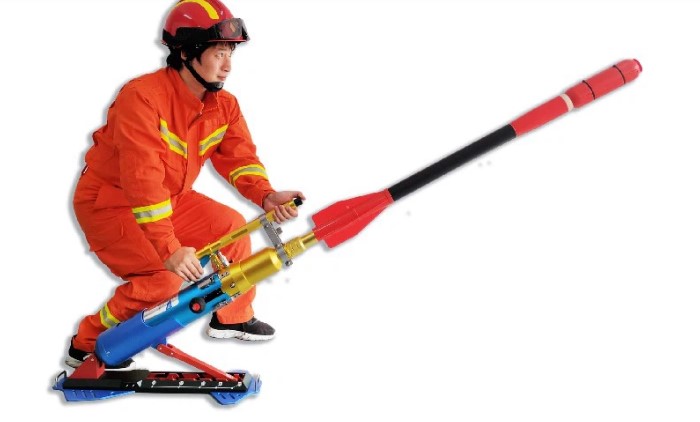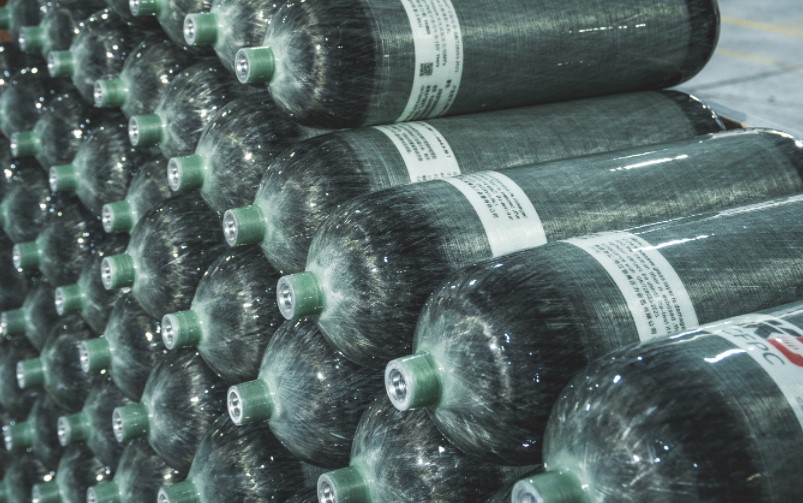In maritime operations, safety and preparedness are paramount. The line thrower is a critical device used in rescue situations or emergencies. Whether casting a line between ships, from a ship to the shore, or vice versa, it plays a crucial role in ensuring that cables, ropes, and rescue lines can be effectively deployed. Line Thrower has become a widely recognized tool, essential for anyone working on or around the sea. This article will explore the function of the line thrower, its uses in various maritime operations, and the importance of carbon fiber composite cylinders in its design and performance.
What is a Line Thrower?
A line thrower is a mechanical device designed to project a pilot line across distances. This pilot line is often used to pull heavier cables or ropes needed for various tasks such as:
- Towing another vessel
- Transferring supplies or equipment
- Securing a ship to the shore
- Facilitating rescue operations
In rescue operations, a line thrower can quickly deploy a line across large gaps, such as between two ships or from a ship to a person overboard. This can be lifesaving when time is of the essence.
Key Uses of Line Throwers
Line throwers are versatile and essential in multiple maritime scenarios:
- Ship-to-Ship Operations During emergencies or routine operations, ships may need to establish a connection with one another. A line thrower helps cast the initial pilot line, which can then be used to pull larger ropes or cables. This is particularly useful during towing operations, where one ship may need to assist another vessel that has lost power.
- Shore-to-Ship or Ship-to-Shore Applications In situations where a ship needs to establish contact with the shore, such as docking or during rescue efforts, a line thrower provides a fast and effective means of deploying a line. This can be especially important in rough seas or when traditional methods would be too slow or dangerous.
- Rescue Operations The most critical use of a line thrower is in rescue operations. When someone has fallen overboard, or there is a need to transfer personnel or equipment during an emergency, a line thrower can quickly send out a rescue line, allowing for the safe retrieval of individuals or cargo. In cases where speed is essential, such as when someone is in danger of drowning, the line thrower becomes indispensable.
- Deploying Lifelines in Severe Weather High winds and rough seas can make it nearly impossible to throw a rope or cable by hand. A line thrower overcomes this limitation by mechanically launching the line over long distances, ensuring that essential connections can be made even in the most challenging conditions.
Carbon Fiber Composite Cylinders in Line Throwers
One of the crucial components in modern line throwers is the carbon fiber composite cylinder. These cylinders are used to store the compressed air or gas that powers the launching mechanism. Carbon fiber composite cylinders offer several key benefits over traditional steel or aluminum cylinders:
1. Lightweight Design
Carbon fiber composite cylinders are significantly lighter than their steel or aluminum counterparts. This makes the line thrower easier to handle, especially in emergencies when every second counts. A lighter device allows for quicker deployment and reduces operator fatigue, which is particularly important in high-stress situations.
2. Higher Pressure Capacity
Carbon fiber cylinders can hold higher pressures, often up to 300 bar or more. This increased pressure allows the line thrower to launch the pilot line over greater distances, which is especially useful when ships are far apart or during long-distance rescue operations. The high-pressure capacity also ensures that the line thrower can operate reliably in a wide range of conditions, from calm seas to rough storms.
3. Durability
Carbon fiber composite materials are extremely durable, able to withstand the harsh marine environment. Exposure to saltwater, extreme temperatures, and physical impacts can degrade traditional materials over time, but carbon fiber is resistant to corrosion and damage. This makes it an ideal choice for a device that needs to function reliably in emergencies.
4. Reduced Maintenance
Due to their resistance to environmental factors, carbon fiber cylinders require less maintenance than traditional steel or aluminum ones. This makes them more cost-effective over the long term and ensures that they are ready for use whenever needed. Regular inspections are still required, but the frequency and complexity of maintenance are reduced.
How a Line Thrower Works
The basic operation of a line thrower involves launching a projectile attached to a thin pilot line. The projectile is typically propelled by compressed air or gas stored in a cylinder. Once the pilot line has been launched, it can be used to pull heavier ropes or cables into place, depending on the requirements of the situation.
Line Thrower uses a carbon fiber composite cylinder to store the compressed air that powers the launch. When activated, the cylinder releases the air, which propels the projectile and the attached line over a long distance. The line is then secured and used to pull larger equipment, cables, or lifelines as needed.
Safety and Training
While the line thrower is a valuable tool, it requires proper training to operate safely. The high pressures involved in launching the line mean that operators must be aware of the potential risks, including the recoil from the device and the force of the projectile. Regular training and drills ensure that the crew can use the line thrower effectively and safely in real-world scenarios.
Conclusion: A Lifesaving Tool with Advanced Materials
The line thrower is an essential device for anyone involved in maritime operations, providing a fast, efficient, and reliable means of deploying pilot lines for various purposes. Whether used in ship-to-ship transfers, shore-to-ship applications, or emergency rescues, the line thrower plays a critical role in ensuring safety and efficiency at sea.
The use of carbon fiber composite cylinders in modern line throwers enhances their performance by reducing weight, increasing pressure capacity, and improving durability. This ensures that the line thrower can be deployed quickly and reliably, even in the most challenging conditions. For maritime professionals, the line thrower is not just a useful tool but a vital piece of equipment that can make the difference between a successful rescue and a tragedy.
Post time: Sep-23-2024


